January 29, 2021
Air Date: January 29, 2021
FULL SHOW
SEGMENTS
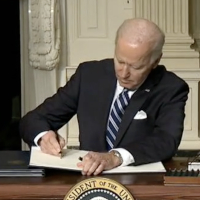
The Whole of Government For Climate Action
View the page for this story
The Biden Administration is making big and early moves to tackle the climate crisis and show the rest of the world and major investors that the U.S. is aggressively committed to ‘whole of government’ climate action. Alden Meyer, Senior Associate at the climate think tank E3G, joins Host Steve Curwood to talk about “shifting the trillions” and the ambitious next steps that the global community will expect to see from the U.S. in what could be a make-or-break year for global climate action. (11:56)
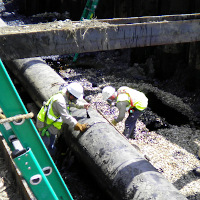
Resisting Line 3 Pipeline
View the page for this story
Enbridge’s Line 3 pipeline, which would carry tar sands oil from Alberta, Canada to Wisconsin if completed, is facing strong opposition from Native American tribes and environmental activists. Rural development economist and Ojibwe water protector Winona LaDuke speaks with Host Bobby Bascomb about the risk of spills from the pipeline and other concerns. (03:54)
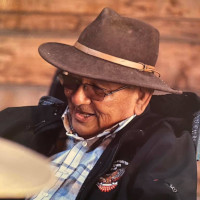
COVID Risk for Tribal Cultures
View the page for this story
Native American communities have been hit especially hard by the Covid-19 pandemic, with nearly twice the mortality rate of white Americans. The deaths of tribal elders are also leading to losses of language and other cultural knowledge. Jason Salsman, the Press Secretary for the Muscogee Creek Nation, speaks with Host Bobby Bascomb about how Covid-19 has affected his community and why elders are first in line for vaccination. (08:57)
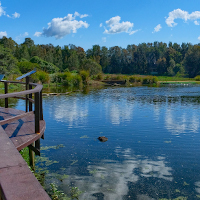
Beyond the Headlines
/ Peter DykstraView the page for this story
For this week's trip beyond the headlines, Host Steve Curwood and Environmental Weekend News Editor Peter Dykstra start by looking at Climategate email hacks in 2009 and climate misinformation since. Then, they take a quick look at Brazilian Jair Bolsonaro's record of environmental and human rights controversies under review by the World Court. Finally, the two open the history book to the UN’s 1971 Ramsar Convention on Wetlands. (04:55)
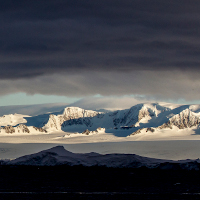
Vista: A Break in the Storm
/ Mark Seth LenderView the page for this story
Living on Earth’s Explorer in Residence, Mark Seth Lender, takes us to the edge of the Antarctic Peninsula as dramatic storm clouds part. (03:17)
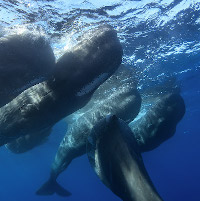
‘Becoming Wild’ and Culture Among Animals
View the page for this story
‘Becoming Wild’ and Culture Among Animals: For people culture is characterized by things like language, food, and customs, and biologists are finding the same is true for many animal species. In his latest book, Becoming Wild, Carl Safina explores how a variety of animals, from sperm whales to birds, live within a culture, in much the same way as humans. Carl Safina talks with Host Steve Curwood. (13:40)
Show Credits and Funders
Show Transcript
210129 Transcript
HOSTS: Bobby Bascomb, Steve Curwood
GUESTS: Winona LaDuke, Alden Meyer, Carl Safina, Jason Salsman
REPORTERS: Peter Dykstra, Mark Seth Lender
[THEME]
CURWOOD: From PRX – this is Living On Earth.
[THEME]
CURWOOD: I’m Steve Curwood
BASCOMB: And I’m Bobby Bascomb
Senate majority leader Chuck Schumer is calling for president Biden to declare a national climate emergency.
SCHUMER: Now Trump used this emergency for a stupid wall, which wasn't an emergency. But if there ever was an emergency, climate is one. So, I would suggest that they explore looking at climate as an emergency, which would give them more flexibility. After all, it's a crisis.
CURWOOD: Also, many Native American communities are prioritizing the keepers of their culture when deciding who is first to get the coronavirus vaccine.
SALSMAN: The elders and the native language speakers were in tier one phase one. We’re trying our best to convey the seriousness of getting those folks vaccinated because if we don’t have a language we don’t have a people.
CURWOOD: That’s this week on Living on Earth – Stick Around!
[NEWSBREAK MUSIC: Boards Of Canada “Zoetrope” from “In A Beautiful Place Out In The Country” (Warp Records 2000)]
[THEME]
The Whole of Government For Climate Action
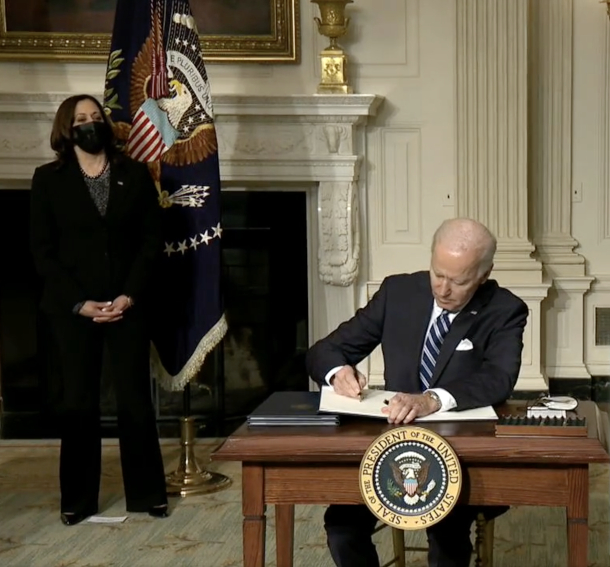
President Joe Biden signs the Executive Order on Tackling the Climate Crisis at Home and Abroad as Vice President Kamala Harris looks on, January 27, 2021. (Photo: Screenshot from White House video)
BASCOMB: From PRX and the Jennifer and Ted Stanley studios at the University of Massachusetts Boston, this is Living on Earth. I’m Bobby Bascomb.
CURWOOD: And I’m Steve Curwood.
Some Democratic senators are among climate activists who are urging President Joe Biden to declare a national state of emergency regarding the climate, including Senate majority leader Chuck Schumer of New York, who spoke on MSNBC:
SCHUMER: I think it might be a good idea for President Biden to call a climate emergency. Then he can do many, many things under the emergency powers of the President that wouldn't have to go through - that he can do without legislation. Now Trump used this emergency for a stupid wall, which wasn't an emergency. But if there ever was an emergency, climate is one. So, I would suggest that they explore looking at climate as an emergency, which would give them more flexibility. After all, it's a crisis. It's a crisis.
CURWOOD: On January 27th, the day after Senator Schumer’s remarks, the White House held what it called ‘climate day.’ With his climate team beside him the President signed an executive order calling for “a whole of government” action plan on climate. But Mr. Biden didn’t go as far as declaring a National Emergency.
BIDEN: To summarize this executive order, it's about jobs, good paying union jobs. It's about workers, building our economy back better than before. It's a whole of government approach to put climate change at the center of our domestic, national security, and foreign policy. It's advancing conservation, revitalizing communities and cities and on the farmlands and securing environmental justice. Our plans are ambitious, but we are America. We're bold, we're unwavering in the pursuit, of jobs innovation, science and discovery. We can do this, we must do this, and we will do this.

Special Presidential Envoy for Climate John Kerry called the upcoming climate talks in Glasgow, Scotland “the world’s last, most important opportunity” for meaningful climate action. (Photo: Robert Brown, Flickr, CC BY-SA 2.0)
CURWOOD: There are a number of elements in the Biden climate action plan, and today we start looking at the details. So, first we consider how the Biden Administration is looking to partner with the global community, now that America is back in the Paris Climate Agreement. US Special Climate Envoy John Kerry recently told a business gathering of G20 nations that in 2021 the US must go all in and be ready when 195 countries gather for the next big UN climate summit in Glasgow, Scotland this November.
KERRY: We really have the world’s last, most important opportunity to come together, to raise ambition and to take the next step from Paris. Failure is simply not an option.
CURWOOD: Joining us now to talk about the global opportunities and challenges for the Biden Administration is Alden Meyer, Senior Associate at the climate think tank E3G. Welcome back to Living on Earth Alden!
MEYER: Thanks, Steve, it's great to be back with you again.
CURWOOD: So let's take a look at the big picture for a moment. How can the global business community work together with nations and the international climate process to speed up this wholesale transformation of the global economy?
MEYER: Well, the good news is the business community has been deeply engaged across the world on this. And in recent years, many companies are making truly transformational commitments to get to net zero emissions; in the case of Microsoft, net-negative emissions in their supply chains and their operations; going to 100% renewable energy sourcing, etc. What they most want from governments is clarity and a strong set of rules to make everyone play by the same ground rules. And so they in many cases are supportive of this transformational agenda. Of course, business is not uniform. There are still those in the fossil fuel industry and some other sectors that are not totally with the program, and will resist the kind of policies that Secretary Kerry has been calling for. But by and large, business is weighing in, they're pressing leaders in the G7, in the G20 group of nations to do more, to make transformational commitments. But it's a heavy lift.
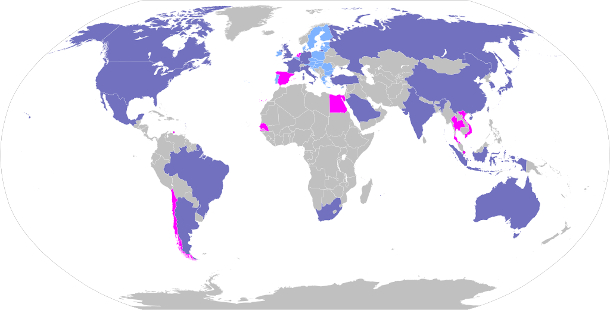
G20 member countries shown in purple. Members of the European Union not individually represented are shown in light blue and 2019 guest nations are in pink. (Image: Wikimedia Commons, public domain)
CURWOOD: Now Alden, the G20 has a summit immediately before the next big UN climate talks in Glasgow, Scotland this November. What needs to get teed up for the G20 in order to build up strong momentum going into Glasgow? And by the way, I understand there's a B20 that works with the G20, and you might want to explain what the B20 is, and how that connects with the G20 and how that's going to get into these negotiations ultimately in Scotland.
MEYER: Sure, well, the G20 represents twenty of the largest industrial and developing nations, countries that collectively account for about 85% of global emissions. So it's where the emissions are if you're going to get something done on this. Clearly one of the agendas here has to be getting more of the G20 countries to commit to the net zero emissions targets by mid century, that now all of the G7 industrialized countries have committed to with the change of administrations here in the U.S., and even countries like China and South Korea have now committed to, in principle. Living into that, of course, is a challenge because to get there, you have to do dramatic action in the coming decade in the run up to 2030. Now, as you said, there are interest groups like the B20, which is the business associations from the twenty G20 countries. There's also the L20, which is labor interests. There's the C20, which is civil society. And all of these groups meet as constituencies and try to influence the policymakers and the agenda for the G20. Now, the Italians have said they want to convene this summit the two days before the opening of COP26, the climate summit in Glasgow, and then have the leaders come from Rome to Glasgow, to be there for a high-level segment of the COP under the leadership of the United Kingdom. That's the plan; of course, we'll see if COVID allows that kind of large-scale public gathering by November. We all hope it does, but it's by no means a certainty.
CURWOOD: Alden, how has the COVID-19 pandemic shifted the dynamic of global climate action heading into the Glasgow talks?
MEYER: Well, it's obviously made a huge impact politically; it is the issue that's front and center on every country's mind, every politician's mind. They have to address the COVID health crisis and the economic damage that the COVID pandemic has created. But they have to do that in a way, as President Biden said during the campaign, that we "build back better" from this crisis, because we could get to Glasgow 10 months from now, and have locked in a lot of future emissions, if we make those investments in the wrong way.
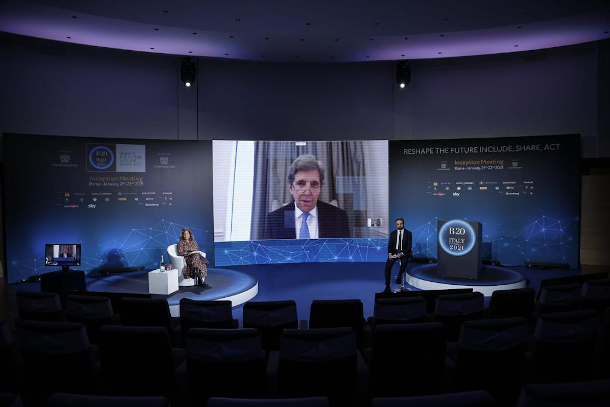
Emma Marcegaglia, B20 Chair (left) with John Kerry, United States Special Presidential Envoy for Climate (center) and the Italian Minister of Economy and Finance, Roberto Gualtieri. (Photo: Courtesy of B20)
CURWOOD: When John Kerry, the US international climate czar, was speaking at the B20, the business group, he said that the Glasgow talks are really the last best chance for the planet to come together and get ambition raised from countries' initial Paris pledges. What does the Biden administration need to do in order to have a solid plan heading into those talks?
MEYER: Well, the US is now on the hook, since we've re-entered the Paris agreement, to put forward what's called an NDC, a nationally determined contribution for the year 2030. Technically, that was due by the end of 2020. But the rest of the world obviously will give the U.S. a pass because of the past Trump administration, which they're happy to see in the rearview mirror when it comes to climate. There's indications the Biden-Harris administration wants to put that plan forward before Earth Day, April 22, which is when they're talking about President Biden hosting a climate ambition summit of leaders to address the climate crisis. So that's one piece, and that plan has to have some political reality and robustness to it, it has to be something the world thinks the U.S. can actually carry out. So the administration needs to consult with Congress, with governors, with mayors, with business leaders and others, to make sure there's support for the kind of proposal they put forward. The other side of this is climate finance. We are $2 billion in arrears on the $3 billion pledge that President Obama made to the Green Climate Fund, for example. So making up that remaining 2 billion is an immediate priority for the administration. But the world is also looking, what more we can do to build on that, both with our bilateral and multilateral commitments to climate finance. So I would say domestic action, and climate finance are the two big litmus tests the world will be looking for from the U.S. in the run up to Glasgow.
CURWOOD: Okay, Alden, so polish up your crystal ball and tell me what you see in the nationally determined contribution or the NDC, from the U.S. that will get offered for the Paris Climate Agreement, what will be in it?
MEYER: Well, there's different pieces here, there's what's the level of ambition; of course, the existing commitment for the U.S. under Paris is for a 26 to 28% reduction in emissions below 2005 levels by 2025. Because of what ex-President Trump did to take the U.S. out of the game and try to dismantle federal climate policy, it will be very challenging for the U.S. to meet that target. The world is looking for the U.S. to put a target on the table for 2030 that's consistent with a trajectory to net zero emissions by mid century. So that has to be something in the 45 to 50% range, for example. And to do that the administration is going to have to use a mix of doing everything it can with existing executive authority, through the agencies -- EPA, Department of Energy, Department of Interior, Transportation, others -- to put pedal to the metal there and do actions to decarbonize various sectors of the economy. They're also going to have to try to get Congress to go along with budget and infrastructure and stimulus proposals that make investments in these sectors. And finally, they're going to have to work with the states, the cities, the business leaders, investors and others that have been part of the We Are Still In coalition during the Trump years to deepen and broaden sub-national action on climate change, which has been the driving force for keeping us in the game over the last four years in terms of domestic emissions. So it's, a it's a pretty complicated set of pieces they have to put together. And they're going to have to navigate the politics as they do that.

President Biden’s “Build Back Better” plan aims to boost clean energy jobs and other “jobs of the future” to jumpstart an economic recovery. (Photo: Robert Couse-Baker, Flickr, CC BY 2.0)
CURWOOD: Hey, Alden, how valid do you think are the concerns about big business capturing the climate negotiation process, and thereby watering down ambition to decarbonize?
MEYER: Well, we've, we've clearly seen the impact of business from the beginning of this process back in the early 1990s, trying to shape it to their liking. Of course, in those days, it was the fossil fuel companies working directly with Saudi Arabia, Kuwait, other countries to try to water down ambition in the original framework convention in Rio. We've seen that shift over time for more progressive business involvement, saying, Yes, we want to have climate ambition, but we want to do it in a way that's favorable to us. There can be examples there of green scamming, of looking like you're doing something when you're really not changing your basic modus operandi. There have been concerns about some of the mechanisms created in the international climate regime, like the clean development mechanism where there were projects done, which people said didn't really benefit the atmosphere, but allowed the countries or the companies to get credits for actions to satisfy their obligations under the climate regime. So you have to do this in a, in a smart way. You don't want to create loopholes, you don't want to create fraud or green scamming. But you need to have business involved and at the table if you're going to do this, because where the governments, for example, are investing tens of billions of dollars in climate finance and infrastructure investments, the private sector is investing trillions of dollars. If you don't shift those trillions of dollars in the right direction, you're not going to get the job done.
CURWOOD: Alden Meyer is a senior associate at the climate think tank E3G. Alden, thanks so much for taking the time with us today.
MEYER: Thanks, Steve. I enjoyed being with you again.
Related links:
- President Biden’s executive actions to tackle the climate crisis
- Biden speaks and signs executive order on combating the climate crisis
- Special Presidential Envoy for Climate John Kerry’s remarks at the B20, as prepared
- Learn more about the B20
- About Alden Meyer
[MUSIC: Dave Brubeck, Matt Brubeck, “Concordia” on Songs Of Joy & Peace, by Dave Brubeck/arr.Matt Brubeck, Sony Classical]
BASCOMB: Coming up – Workers constructing new oil pipelines may be introducing coronavirus to the most vulnerable communities, Native Americans
ANNOUNCER: Support for Living on Earth comes from Sailors for the Sea and Oceana. Helping boaters race clean, sail green and protect the seas they love. More information at sailors for the sea dot org.
[CUTAWAY MUSIC: Dave Brubeck, Matt Brubeck, “Concordia” on Songs of Joy & Peace, by Dave Brubeck/arr.Matt Brubeck, Sony Classical]
Resisting Line 3 Pipeline
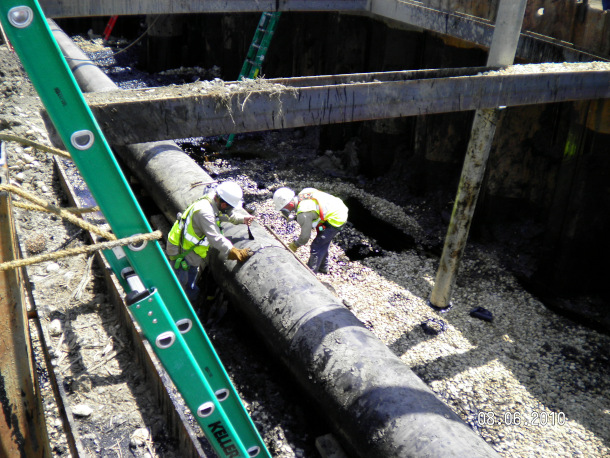
Workers prepare a section of an Enbridge pipeline for removal following a spill in 2010, where a 30-inch pipeline ruptured in Michigan, contaminating the Talmadge Creek and the Kalamazoo River with hundreds of thousands of gallons of crude oil. Opponents to the Line 3 expansion worry similar spills would endanger their lands and waters. (Photo; US EPA, Wikimedia Commons, CC BY-SA 4.0)
CURWOOD: It’s Living on Earth, I’m Steve Curwood
BASCOMB: And I’m Bobby Bascomb.
On his first day in office President Biden issued an executive order that canceled the permit for construction of the Keystone XL pipeline. Native American tribes and allies had been protesting the pipeline for more than a decade and applauded the president’s decision. But several other pipelines are still in the works despite concern from conservation groups and Native American tribes. Among them is the Line 3 pipeline which, like Keystone XL, would bring carbon heavy tar sands oil from Alberta, Canada into the United States. Line 3 would run a corridor through delicate wetlands and the treaty territory of the Anishinaabe peoples in northern Minnesota. It would end at the shores of Lake Superior. For more, we turn now to Winona LaDuke of the Ojibwe White Earth Nation in Minnesota who is one of the founders of the Indigenous Women’s Network, and a rural development economist and political activist protesting pipelines on native land.
LADUKE: I'm really concerned for our whole community. I mean, Enbridge is the largest pipeline company in North America, has six pipes through northern Minnesota already that are old has pipes under the Straits of Mackinac. In the meantime, Governor Walz of Minnesota approved the last tar sands pipeline. And that pipeline is 915,000 barrels a day of oil, the equivalent of 50 new coal-fired power plants. It's the end of the fossil fuel era. Why would you want to put in a bunch more tar sands pipelines?
BASCOMB: Can you tell me about the region that the pipeline would pass through and what's at stake if a spill were to occur?
LADUKE: The pipeline would cross through what's known as the 1855 Treaty territory, or the section of northern Minnesota most full of wild rice, most full of biodiversity, most full of water. We don't want any oil in our water.
BASCOMB: How would the pipeline potentially affect Native American communities in the region?
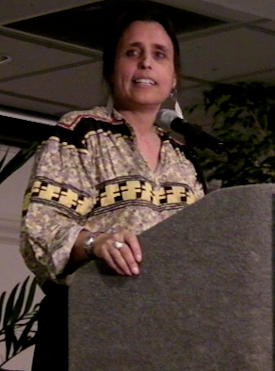
Winona LaDuke lives on the White Earth Reservation in northern Minnesota. She has been resisting the Enbridge Line 3 expansion project for seven years. (Photo; Eclectek, Wikimedia Commons, CC BY-SA 4.0)
LADUKE: Well, there's seven tribes in northern Minnesota and it goes through the heart of our territory. This is our food. This is our way of life. This is the only thing we have. You destroy our land, and you destroy us. That's why we're fighting them.
BASCOMB: You've been protesting the Line 3 pipeline for a long time now, but how do you plan to approach that now that President Biden is in office and he seems more willing to see eye to eye with you on these issues?
LADUKE: You know, our communities have fought this pipeline for seven years. We fought it in courts, we went to every regulatory hearing, and, you know, now we're faced with on the ground. You know, we have 50 people been arrested, and I've been charged with trespassing. I'm facing a lot of police, riot lines. There was more police in northern Minnesota than at the Capitol. So it's civil rights violations on top of environmental destruction. It's brutal. And we've asked for a stay, you know, in construction, because what we know is that the courts are ruling against pipelines. Obviously, the Keystone XL pipeline didn't happen. And we think that if this pipeline is put up to a rigorous test, that would include for instance, the climate change impact of the pipeline, it wouldn't pass the test. You know, we want to hold Biden to the same standard as he did for Keystone.
BASCOMB: And who is doing the work there? Are they being employed within your community, or are you seeing people from outside coming in to do this work?
LADUKE: There's 4,200 workers mostly from out of state who have come into northern Minnesota to put in this pipeline. They walk through our stores without masks on, and they put our communities in the north at higher risk. And as a result, our tribes actually filed for a stay on the pipeline based in part on the fact that we are so at risk, and it is so egregious that the governor would have brought in 4,200 workers during a pandemic to northern Minnesota where the people most impacted already, are tribal people.
BASCOMB: Winona LaDuke is a rural development economist and farmer and a water protector. Thank you so much for taking your time today.
LADUKE: Thank you. Miigwech.
Related links:
- The New York Times | “Not Just Another Pipeline”
- Honor the Earth | What is Line 3? (Video)
COVID Risk for Tribal Cultures

Miko Robert Lee Yargee was the chief of the Alabama ceremonial grounds. He carried Muscogee Creek ceremonies such as the yearly Green Corn Ceremony. He passed away from COVID-19 in 2020. (Photo: Courtesy of Jason Salsman)
BASCOMB: As Winona mentioned, pipeline construction is bringing workers from around the country to Native American communities where the coronavirus pandemic has been especially deadly. The mortality rate for native peoples in the US is nearly twice that as for whites. Across the board the virus is most dangerous for older people and for many Native American groups losing elders means more than just losing a loved one it’s also a loss of culture, tradition, and language.
[MUSCOGEE LANGUAGE]
BASCOMB: For many tribes, including the Muscogee of Oklahoma, there are less than a thousand people remaining who can speak the native language fluently and they are typically the elders. So, when deciding who should be first in line to receive the vaccine many tribal communities are prioritizing their elders in a bid to save the language and culture. Jason Salsman is a spokesperson for the Muscogee Creek nation in Oklahoma. He says the cultural loss to Covid has been devastating.
SALSMAN: That is what has hurt our community the most is the fact that it's not who we lost. It's what we've lost. It's a knowledge and experience in the spirit that went away with these people that we've lost, that really hurts our community and that's why it's affected us a little bit differently. You know, we are unique, we do have cultural markers that make us different. And I think it's because of that is why this has been a different experience for us. Much more sobering experience for us, then then maybe a lot of different groups.
BASCOMB: Well, can you give us an example, please, of some of those cultural traditions that that were lost this year with the passing of some of your elders.
SALSMAN: So at Muscogee Creek Nation, our traditional and ceremonial livelihood centers around the 16 remaining ceremonial fires that are still at the ceremonial grounds. I mean, this is directly given to our people from the Creator. When you talk about ceremonial folks and what they do at the ceremonial grounds. They're taking traditional medicine, they're doing stomp dance, they're singing songs, there's the ceremonial fire. There's all of this knowledge out there. And more importantly, all of that ceremonial knowledge is not put in a textbook. Because a publisher can manipulate the content of a textbook, we know that better than anybody else. It's not broadcast out on television. It's not broadcast out on radio, because guess what, in television, there's a rights holder somewhere. There's somebody that has the creative control over those things. So the ceremonial and the traditional knowledge are things that are kept at the grounds, oral tradition, oral histories passed from person to person, that information, that knowledge is kept inside of those people and because of that, when we lose them, it goes too.
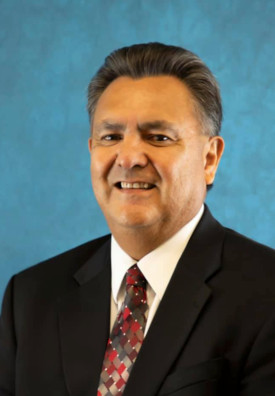
Dr. Robert Bible was the President of the College of Muscogee Nation (CMN) and left a legacy for his contributions to American Indian higher education efforts. Dr. Robert Bible passed away from complications due to COVID-19 in December 2020. (Photo: Courtesy of Jason Salsman)
BASCOMB: Could you tell me the personal story, if you're comfortable with that of someone you lost to the virus and what that meant to you personally, and to your community.
SALSMAN: Speaker Sure, amm. You know, here at the Muscogee Creek Nation. We're one of the few tribes in America that have an accredited tribal college, one of the persons spearheading the efforts to get the college not only built and established, but accredited was Dr. Robert Bible. And he was the president of the college of the Muscogee nation. And Mr. Bible was somebody that everyone knew in in the Muscogee Creek community, he was somebody that was a champion for tribal education, but also was a member of the Chiefs cabinet as part of the leadership team. Unfortunately, Mr. Bible contracted the Coronavirus, and had a pretty serious case of it. He was in the hospital. And I think it just a day after he was released from the hospital, he passed away at his house. The fact of the matter is we lost him. And it was devastating. He was a Well, excuse me, he was a well loved man. And it's a real shame that he's not with us anymore. Because he would love to see all of the dreams he had for the college come to fruition. I think he will in some form or fashion but it would just be great for him to still be here. A lot of people miss Robert so it's tough to talk about still. That's an example of somebody that was in the education community. We just lost Miko Robert Yargee, to this virus. And when I say Miko that is translated as town King, or basically chief of his ceremonial ground. He was the Miko of the Alabama tribal town, or ceremonial ground, and Miko Yargee he was somebody that in the traditional world was so well respected. You know, he was mild mannered, and he spoke sparingly but when he spoke, everybody gathered around to listen, it was very much a cultural icon in the Muscogee Creek Nation. And he was one that would reach out and speak with younger people and let them know this is why you're Muscogee. This is why you speak this way, this is why we meet out here. This is what we're all about to lose somebody like him. It's almost like you're burning a textbook, because Miko appointments are for life. I mean, he started at a young age, almost in a way almost betrothed to his position. You know what I mean? As a Miko in the ceremonial world. And so for him, think about that, you know, he's over 60 years old. So how many years of tradition every summer out in the ceremonial ground, the green corn ceremony knowledge that absolutely can't be found anywhere else on the earth. I mean you can scour the globe. And it's very specific to this area and this culture. So to lose that it's devastating.
BASCOMB: Oh gosh I'm so sorry for your loss I really am. I've read that some tribes, including the Cherokee are choosing to prioritize elders and specifically native language speakers when distributing the vaccine. To what degree were you thinking about elders and native language speakers when deciding who would be first in line for the vaccine in the Muscogee Creek Nation?
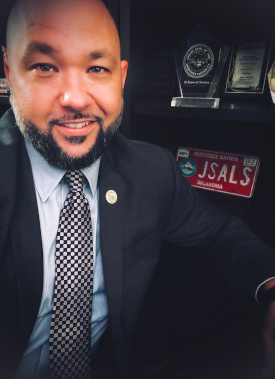
Jason Salsman is the spokesperson for the Muscogee Creek Nation. (Photo: Courtesy of Jason Salsman)
SALSMAN: Yeah, the elders and the native language speakers where in tier one, phase one. I mean, if you could put the tippy top whatever you want to call it, they were the absolute priority. And it's because like I said, that is our distinct cultural marker. You can go to Mexico, you can go to New Hampshire, you can go to India, and nobody's speaking, Muscogee Creek language, they're speaking it here, because they're Muscogee people here. And that's why we have to preserve that. They need to be able to be here to teach that to our younger ones, to immerse them in the language. Who are we, if we don't know how to speak in our own language to one another, we're not Muscogee Creek if we can't speak. And so we're trying our best to not only convey the seriousness of getting those folks vaccinated, but at the same time, the seriousness of what I just said, is that if we don't have a language, we don't have a people.
BASCOMB: Well, I think a lot of people are starting to see the light at the end of the tunnel with the virus now that there is a vaccine. How is that feeling in your community, knowing that the end is hopefully in sight?
SALSMAN: I think we're just like anyone else. There's COVID fatigue, there is isolation, fatigue. We're very communal, birthday parties, Thanksgiving, you know, Christmas gatherings. Even our ceremonial gatherings in the summertime, funerals our people love to be together to just, you know, enjoy that social interaction and that fellowship with their loved ones and their community members. It's the way we've always been. It's the way we always will be this virus be damned. We're going to continue on one day, and get back to those things that make us whole and make us Muscogee and make us full of life and love for one another. This virus will not stop us.
BASCOMB: Well, Jason, thank you so much for taking this time with me today. And I wish you the best of luck and getting through the next few months ahead.
SALSMAN: Thank you so much, Bobby, I appreciate it and you guys stay safe and be well.
BASCOMB: Jason Salsman is a spokesperson for the Muscogee Creek Nation in Oklahoma.
Related links:
- VOA News |“Native American Tribes Try to Protect Elders, Their Knowledge from Loss to Coronavirus”
- New York Times | “Tribal Elders are Dying from the Pandemic, Causing a Cultural Crisis for American Indians”
- San Diego Union Tribune | “Keeping Indigenous Elders Safe from COVID 19 a Critical Part of Preserving Culture”
- Learn More about the Muscogee Creek Ceremonies
[MUSIC: Altin Gun, “Gesi Baglari” on Gece, by Altin Gun, ATO Records]
Beyond the Headlines
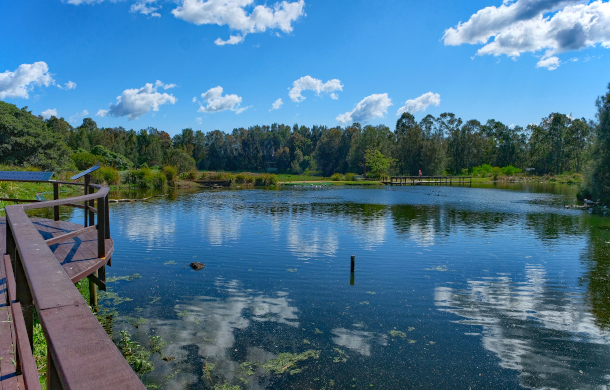
The Ramsar Convention on Wetlands was signed in Ramsar, Iran in 1971, in order to protect wetlands around the world, like these Shortland wetlands in Australia. (Photo: Geoff Whalan, Flickr, CC BY-NC-ND 2.0)
CURWOOD: It's time now to take a look beyond the headlines. And our guide is Peter Dykstra. He's an editor with Environmental Health News, that's EHN.org and DailyClimate.org. On the line now from Atlanta, Georgia. Hey there, Peter, what do you have for us today?
DYKSTRA: Well, hi, Steve. You know, we've been hearing so much lately about threats to democracy. But there's a recent study that may have found that climate politics, once again, has led the way.
CURWOOD: Oh, what are you talking about here?
DYKSTRA: Just like those leaked emails nearly a dozen years ago from climate scientists before the crucial Copenhagen Climate Summit. That's one example of how the use of emails to discredit a political stand happened first with climate.
CURWOOD: Oh, yeah, the so-called Climategate that amplified a few poorly worded emails among tens of thousands and spun them into a scandal.
DYKSTRA: Yeah, that's right. And of course, the scandal turned out to be much ado about nothing. But here's another one. Not really a surprise to me, but something that I was glad to see quantified was a new paper in the journal Climate Policy, where researchers found that of all of the tweets about President Trump's decision to pull the us out of the Paris Climate Accord back in 2017, about one quarter of those tweets were bots sent by computers, and that those bots were overwhelmingly on the side of climate denial.
CURWOOD: Peter, I didn't know that robots didn't like climate science.

The Hubert Lamb building at the University of East Anglia, England hosts the Climatic Research Unit, whose server was hacked in an attempt to discredit climate science. (Photo: ChrisO, Wikimedia Commons, CC BY-SA 3.0)
DYKSTRA: Robots can be programmed to like or dislike whatever you want. And obviously, the political or ideological deniers, the commercially driven ones have found a way to clog the web, and particularly clog Twitter, with phony opinions about climate politics.
CURWOOD: I bet it's not the only thing that they do in terms of phony opinions, but what else do you have for us this week, Peter?
DYKSTRA: Brazil's President, Jair Bolsonaro, may be hauled into the World Court for alleged crimes against humanity.
CURWOOD: You say he may be, what's going on?
DYKSTRA: Well, there's a petition on behalf of two indigenous tribes in the Amazon. Bolsonaro has very notoriously ramped up deforestation in the Amazon by 50% in the less than two years, he's been in office. Those tribes say it's not just a crime against nature, it's a crime against them, it's a crime against humanity, as their loss of land through invasions of those indigenous territories is up by 135% in this very short period of time.
CURWOOD: So, what's he doing or maybe not doing in terms of enforcing the environmental laws?
DYKSTRA: Well, you're right, that it's what he's not doing. Fines for environmental crimes dropped 42% in the Amazon Basin, on the short time Bolsonaro has been in office, and his federal government cut the budget for enforcement by 27.4%, according to a recent analysis.
CURWOOD: When is the World Court can act on this petition?
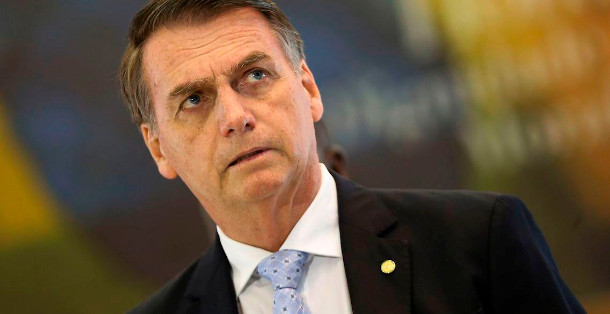
Jair Bolsonaro’s tenure as President of Brazil has been under scrutiny by environmental and human rights activists alike. (Photo: Jeso Carneiro, Flickr, CC BY-NC 2.0)
DYKSTRA: It's not sure what the timeline is and not guaranteed that the World Court will act to bring Bolsonaro in for these crimes. How seriously people take the World Court is, of course, a real variable. But it's certainly another stain on the record of a man who has composed a very, very controversial record for both human rights and environmental protection in his less than two years in office.
CURWOOD: So, let's take a look now back in the annals of history and tell me what you see.
DYKSTRA: We got a great 50th anniversary. February 2, 1971, Groundhog's Day that year, the UN's Ramsar Convention on Wetlands was signed by its original members in the city of Ramsar, Iran. Today, there are 171 Ramsar nations coming together to protect over 2,400 wetlands areas. It's generally considered to be a quiet success in protecting waterfowl, other aspects of wetlands environment, and particularly in places like the Nile, it's needed right now. Upstream, Sudan has proposed a huge dam. Downstream, Egypt could see potential havoc in the world's longest river. It's both the basis of much of Egypt's economy as well as a linchpin of the Nile River economy. A huge dam would alter the water flow and create an ecological mess.
CURWOOD: Not to mention, what would happen to the wetlands there. And that's how the Ramsar Convention gets involved. It's nice to have a Convention like that, huh? Well, thanks, Peter. Peter Dykstra is an editor with Environmental Health News. That's EHN.org, and DailyClimate.org. We'll talk to you again real soon.
DYKSTRA: All right, Steve, talk to you soon, thanks.
CURWOOD: And there's more on these stories on the Living on Earth website. That's LOE.org.
Related links:
- Scientific American | “Twitter Bots Are a Major Source of Climate Disinformation”
- The Guardian | “Jair Bolsonaro Could Face Charges in The Hague Over Amazon Rainforest”
- Read more about The Ramsar Convention here
[MUSIC: Amelia Zirin-Brown, “This Little Light Of Mine” on Songs of Joy & Peace, Sony Classical]
CURWOOD: If you’d like to hear more about the climate gate controversy Peter mentioned, join the Living on Earth book club on February 4th for a live chat with Penn State professor Michael Mann, one of the scientists attacked in the bid to discredit climate science. We’ll be talking with Professor Mann about his new book, The New Climate War that details how fossil fuel interests have waged a decades-long campaign to deflect responsibility and delay action on climate change. Join us online for this live event on February 4th at 4:00 pm Eastern. It’s free and there is a signup link on the Living on Earth website, loe.org. Just click on the events button at the top of the page.
BASCOMB: Coming up –Culture among animals. That’s just ahead on Living on Earth.
ANNOUNCER: Funding for Living on Earth comes from you, our listeners, and United Technologies, combining passion for science with engineering to create solutions designed for sustainability in aerospace, building industries, and food refrigeration.
[CUTAWAY MUSIC: Hawang Keohog, “Ocean of Wisdom” on Journey to the Heart III, by Hawang Keohog, Cocoro Sounds/Domo Records]
Vista: A Break in the Storm
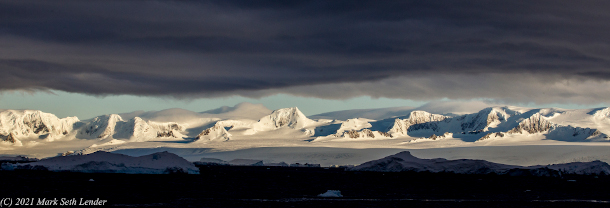
The Antarctic Peninsula as the sun rises. (Photo: Mark Seth Lender)
CURWOOD: It’s Living on Earth, I’m Steve Curwood.
BASCOMB: And I’m Bobby Bascomb. And now a trip to the edge of Antarctica with Living on Earth’s Explorer in Residence, Mark Seth Lender.
Vista
A Break in the Storm
Antarctic Peninsula
© 2020 Mark Seth Lender
All Rights Reserved
We depart our last anchorage and port of call and haul away and into the storm.
Now outside the bight…
Now, passing the sharp outline of the promontory...
And now the sea. Irate! The older sibling wishing you were never born.
The sky is a coffin lid tucked all in on itself. The sea ice, torn. The spray stings like a live thing with a mind to do you harm! I pull my great coat close to my face and hunker behind the rails. Shelter is the errand of a fool in this. You might as well extend your arms your fingers spread and claim that you can fly. And we make the turn towards our ship and meet the gale head on.
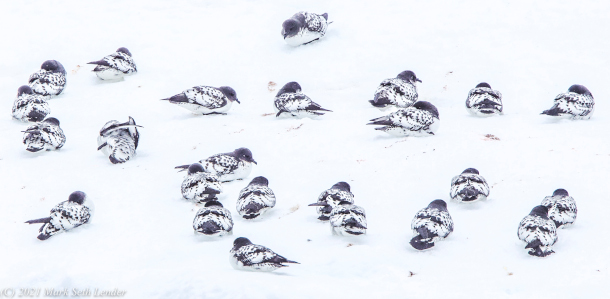
Cape Petrel gather on Astrolabe Island. (Photo: Mark Seth Lender)
The wake spirals off the stern (no one could keep a straight course in this). And we are weather blind. No sign of a hundred meters of steel and gear, white knuckled to the safety line. And with an effort of will I lift my eyes, and risk a glance to the weather side where my reward for being brave (such bravery as I can mount) is not the safety that we seek, but a once in a lifetime sight:
The ocean parts from black and roiling clouds.
The horizon splits in two.
As sudden as a magnesium flare from the break of sky and sea an otherworldly light pours through:
Antarctic Peninsula!
All along the line mountains rise, glaciers crest in frozen curves, roiling snow across the peaks like smoke, where nothing burns:
Antarctic Peninsula!
This must be how the planets look that orbit distant stars human beings will never see, not even in the mind’s eye. Rare as a galleon coin, wave-tossed, among the bracken lost, a world, a world entire stands apart:
Antarctic Peninsula!
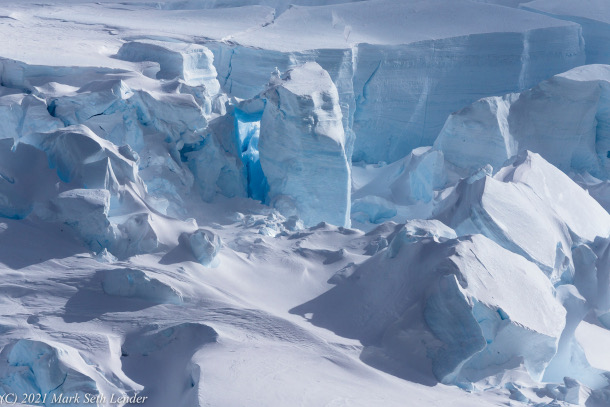
The tumbling edge of a glacier. (Photo: Mark Seth Lender)
The name rings like a Ship’s Bell.
Like Victory when all is lost.
The lifting of a Magic Spell.
Antarctic Peninsula!
This hour, this day, I will remember all my Life.
BASCOMB: That’s Living on Earth’s Explorer in Residence, Mark Seth Lender.
To see Mark’s photos from the Antarctic Peninsula, visit our website, LOE.org.
Related links:
- Read Mark's Field Note for this essay
- For more from Mark Seth Lender, visit his website
- Mark Seth Lender’s fieldwork is arranged through Destination Wildlife
[MUSIC: Bill Miller, “Wind Spirit” on Native America, by Bill Miller, Putumayo]
‘Becoming Wild’ and Culture Among Animals
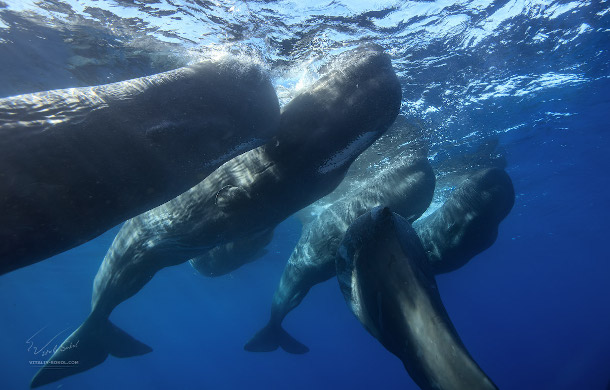
A pod of sperm whales socializing. The whales are known to be highly social and tend to travel in groups. (Photo: Will Falcon, Wikimedia Commons, CC BY 4.0)
CURWOOD: For people culture is characterized by language, food, customs, certain territories and a shared sense of esthetics. And biologists are now paying more attention the concept of culture in the animal world. Carl Safina’s latest book is called Becoming Wild: How Animal Cultures Raise Families, Create Beauty and Achieve Peace. In this book he writes about how animals from whales to birds live their lives within cultures with language, food and customs that define them in ways similar to how cultures define us. Becoming Wild is Carl Safina’s tenth book, and he joins me now. Welcome back to Living on Earth, Carl!
SAFINA: Well, thank you.
CURWOOD: So Carl, what is culture?
SAFINA: Culture is the behaviors, the habits, and even the attractions that we learn socially and that are transmitted socially. The amazing thing to me is that, whether it's human, modern, Western technological culture, or whether it's sperm whales, culture basically does the same things for social beings. It answers the question of, how do we live here, where we live?
CURWOOD: So I think what's so fascinating about this book, and maybe this is the point. Animals have culture. I mean, you've been talking in your previous works about consciousness that animals have, but here, you have picked some examples to show that animals have culture. Why do that?
SAFINA: I'm trying to figure out who we are by by knowing who we're with. And that informs everything about life. You know, it gives us perspective. Where do we come from? How are we compared to other living things? What are the overlaps? What are the similarities? And I find it both intellectually fascinating, also, emotionally astonishing, and, and very beautiful a lot of the time.
CURWOOD: What animals have things like, say favorite baseball teams, and, and music and whether or not maybe they were Michael Jordan's, or wingtips? What do we see of that in the world of animal culture that you studied doing this work?
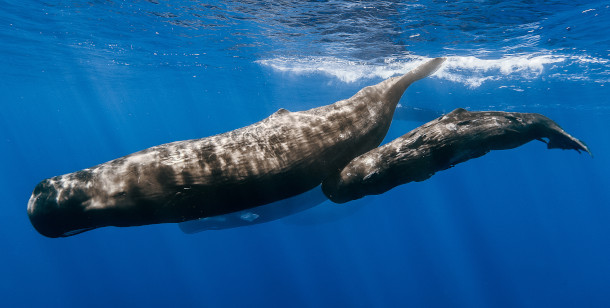
A mother and calf sperm whale off the coast of Mauritius. The rest of the pod swims close by. (Photo: Gabriel Barathieu, Wikimedia Commons, CC BY-SA 2.0)
SAFINA: You just fell right into the gigantic pit trap of how to approach this subject, which is to take the human answer sheet and see how other animals score on our test. If we like certain kinds of shoes, you know, that's part of our culture. But with other animals, it's things like, what constitutes food for us in this region? Where do we go in the winter, when things start to get harsh? What predators do we need to be aware of and be afraid of? And because the things that you were talking about specific kinds of shoes or specific teams and things like that, those are ways that humans specialize within their culture. This is a major aspect of culture, across all species, is that culture is really based on specialized ways of doing things. And those specialized ways vary from one cultural group to the next. So, for instance, you have sperm whale clans, that one clan hunts and travels in a certain pattern. Another clan that may swim through the same waters, they hunt and travel with a different pattern. Chimpanzees, you probably know that chimpanzees make tools out of sticks and things like that. But there are chimpanzees that make no tools out of sticks. There are chimpanzees that use stone tools. There are a lot of different kinds of things within chimpanzee cultures, but they vary from place to place, which is one of the main reasons that we know that it's cultural. Birds often sing with a local dialect. If you move them to a different place, and they start trying to court using the dialect from where they're from. Well, that is not the favorite song of the place that you've just experimentally moved them to. And their courtship will not find any engagement among the females there who are listening and looking for suitable males. It's a weird song to them. So you know, humans have a kind of similar thing. We listen to music from other cultures, we tend to like our own the most. We identify with our own the most. And, so the details are really totally different. But how it functions is really remarkably similar.
CURWOOD: So you open your book down off of Dominica in the Caribbean, I guess what's really cool about that area is that these are volcanic mountains that really just erupt from the ocean floor. How many feet down, would you say Carl?
SAFINA: Oh, I really don't know exactly how far they plunge but very, very close to shore, within just two or three miles. It's several thousand feet deep. And that's why we were there because sperm whales live in very deep ocean, but there, you can study them from shore because a few miles from shore, you're in very deep ocean.

A sperm whale spotted in Kaikoura, a town in the southern island of New Zealand. The whales can be spotted in all deep oceans, such as the one off of Kaikoura. (Photo: Gregory Smith, Flickr, CC BY-SA 2.0)
CURWOOD: And so you spent a fair amount of time studying sperm whales, and you talk about them in terms of having a culture. What are the elements of that culture and and how do they communicate?
SAFINA: Basically, one of the most surprising things about sperm whales is that their social organization is almost exactly like elephants. They live in female-led families where the matriarch, the oldest female, she may be with her younger sisters and their daughters and their children. When the males get to adolescence, just like with elephants, they go off they have a different male kind of a social structure. But these family groups are female. And why is that? It's similar reasons in both situations is that they have need to protect very helpless babies as a group. With the sperm whales, their food is maybe 3000 feet from the surface. There's no light at all. There's very cold temperatures, they hunt entirely by using sonar. They make these clicks about every other, about two per second. And they hunt for squid that way in the dark using sonar, and they're down for about 15 minutes at a time. And then they come up for about 10 or 12 minutes. The babies cannot go down there. And left at the surface, they're totally helpless. So if any orcas killer whales show up, or any, sometimes pilot whales or, or false killer whales like to harass them, they're totally helpless. So they need somebody to keep an eye on them. And that would be if if their mother is down looking for food, one of their aunts or possibly an older sister would be babysitting for them. At the slightest sign of any trouble, she will call and they will all come rocketing up from the depths. As somebody said, when there's any trouble, sperm will seem to come out of nowhere. And they call other groups of sperm whales that may come from as far as seven miles away, coming toward the danger, looking as a group to protect the most vulnerable and to protect each other from dangerous attack. They communicate with clicks. And when they're hunting. The clicks are, as I said, about two per second. When they're at the surface or coming near the surface, they change these two patterns of cliques that sound like simple Morse code. And in fact, they're called codas by the scientists. And what they say at the very minimum, maybe they say some other things, but at the very minimum, they say who they are as an individual. They announce who they are. They announce what family they are with. And they announce what clan their family belongs to. Families within a clan can socialize. But families of different clans avoid one another. So that's how they say it and that's what they say.

A sperm whale and giant squid locked together. The whale can grow up to 59 feet and the largest giant squid was recorded to be 43 feet. (Photo: Ryan Somma, Flickr, CC BY-SA 2.0)
CURWOOD: So if the sperm whales live together in a tight culture just in their family group, certainly no, no wider circle than their clan. What happens to genetic diversity for them?
SAFINA: Well, sperm whale clans are big. They may contain thousands of whales. And with the sperm whales, what happens is the males leave. And they go for a number of years to high latitudes, while the females stay mostly in the tropics and subtropics the males go to places that can be very cold. And then they come down, and they look for groups of females and they mate. So the males keep the gene pool mixed. And that's why the sperm whale culture is purely cultural, has no genetic component. But the Orca whales, for instance, they have fish eating groupsand mammal eating groups. They do not have roaming males. Their males stay within what's called their community, which is kind of like a smaller, much smaller clan that may have a few hundred individuals and the males will not leave that community. And that's why with them, you do get genetic differentiation so that the fish eating ones are a little different than the mammal eating ones in terms of the size of their teeth and the strength of their jaws. After you have this culture of catching mammals, there is a pressure for your genes to catch up and give you bigger teeth, bigger jaws, stronger jaws, and that is exactly what we see. And the other thing that we see is that those two types have not interbred for several 100,000 years. The usual definition of species is you can interbreed freely when you meet an individual of your own species. They don't do that. So the culture has made them segregate and start evolving into a deeper specialization, each of them, that has gotten them along a different evolutionary path. And this is the kind of effect of culture that I think has been totally overlooked. Until basically until now. With Orca whales around the world. There are probably ten different, what they call them types. But when the genetic evaluations are all done, I think we will find that they really are different species because they are genetically differentiated as a result of this cultural divergence and self-segregation. One scientist said that Orca whales are the most self-segregated species other than humans.
CURWOOD: So, in all this work, studying sperm whales, that sounds like a challenging environment where if you're offshore, it's several thousand feet down. What sort of intelligence did you observe in these whales? What surprised you?
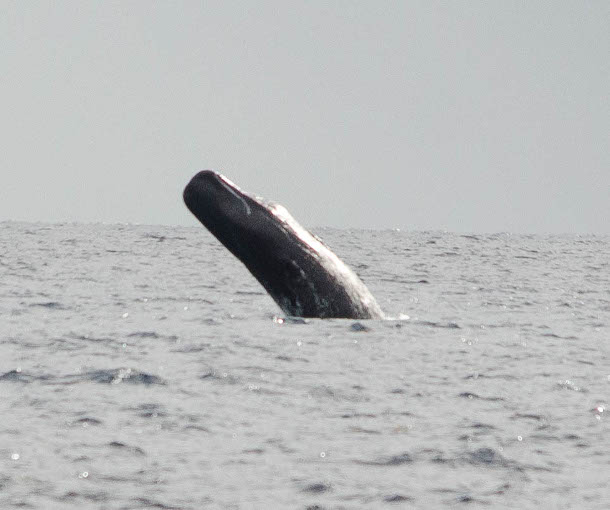
A sperm whale breaching. This species is the largest of the toothed whales. (Photo: Neil DeMaster, Flickr, CC BY-NC-ND 2.0)
SAFINA: I think what surprised me was how very mammalian they are. You know, they don't have hands. They don't have any rear appendage at all. They have front flippers, they have this gigantic head that's a third of their body length, which is a sound amplifying boombox. It makes, it makes them able to emit the loudest sound made by any living thing. So they're very odd looking compared to us. They have, you know, they have basically a fish shape. They live in the ocean. But when they get together, they're very mammalian. They like caressing each other. They extend their flippers and rub their flippers along each other. They roll around together. They appear to be very happy to be together when they get together, which is you know. As I said, usually they go down for most of an hour, and then they come back they meet whoever is babysitting the young one. And it's a greeting time and sometimes they just chill and they seem relaxed. They seem pleased to be with one another. And they seem excited to rejoin one another. As they're coming up these codas intensify. One scientist witnessed a birth and said that, at the moment of birth, there was a loud blast of codas from the other whales that were present for the birth. So I think that was the most surprising thing about them.
CURWOOD: I'm just wondering, Carl, if you'd be willing to share a reading, starting from that last full paragraph of page 272 of your, of your book.
SAFINA: When we stop viewing the apes and parrots and dolphins as quote, models of primitive human origins. When we remove our human blinders, we can see that other beings on Earth take an interest in their lives and understand something about who they are, where they are, who they're with, and what they're doing. In their shared experience, they sow and reap their own cultures. Who we are voyaging with on this lonely living planet is quite possibly the only meaningful line of inquiry.
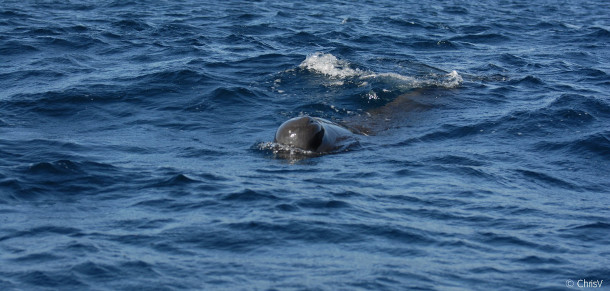
A baby sperm whale approaching a boat. (Photo: Christine Veeschkens, Flickr, CC BY-NC-ND 2.0)
CURWOOD: Carl Safina is the author of "Becoming Wild: How Animal Cultures Raise Families, Create Beauty, and Achieve Peace." Carl, thanks so much for taking the time to join us today.
SAFINA: I'm always very honored to be with you. It's been really great and really fun.
Related links:
- Click here for the Becoming Wild book (Affiliate link helps donate to LOE and local indie bookstores)
- About Carl Safina
- Advancing the case for life on Earth by The Safina Center.
- Sperm whales, cultures, and clans
[MUSIC: Paul Winter, “The Well-Tempered Wood Thrush” on Light of The Sun, Earth Music Production]
CURWOOD: Living on Earth is produced by the World Media Foundation. Our crew includes Naomi Arenberg, Paloma Beltran, Grace Callahan, Jenni Doering, Jay Feinstein, Paige Greenfield, Leah Jablo, Mark Seth Lender, Don Lyman, Aynsley O’Neill, Jake Rego, and Jolanda Omari. We welcome Natalie Seo to the team this week.
BASCOMB: Tom Tiger engineered our show. Alison Lirish Dean composed our themes. Special thanks this week to Destination Wildlife. You can hear us anytime at loe.org, Apple Podcasts and Google Podcasts, and like us, please, on our Facebook page - Living on Earth. We tweet from @livingonearth. And find us on Instagram at livingonearthradio. I’m Bobby Bascomb
CURWOOD: And I’m Steve Curwood. Thanks for listening!
ANNOUNCER: Funding for Living on Earth comes from you, our listeners, and from the University of Massachusetts, Boston, in association with its School for the Environment, developing the next generation of environmental leaders. And from the Grantham Foundation for the protection of the environment, supporting strategic communications and collaboration in solving the world’s most pressing environmental problems.
ANNOUNCER 2: PRX.
Living on Earth wants to hear from you!
Living on Earth
62 Calef Highway, Suite 212
Lee, NH 03861
Telephone: 617-287-4121
E-mail: comments@loe.org
Newsletter [Click here]
Donate to Living on Earth!
Living on Earth is an independent media program and relies entirely on contributions from listeners and institutions supporting public service. Please donate now to preserve an independent environmental voice.
NewsletterLiving on Earth offers a weekly delivery of the show's rundown to your mailbox. Sign up for our newsletter today!
 Sailors For The Sea: Be the change you want to sea.
Sailors For The Sea: Be the change you want to sea.
 The Grantham Foundation for the Protection of the Environment: Committed to protecting and improving the health of the global environment.
The Grantham Foundation for the Protection of the Environment: Committed to protecting and improving the health of the global environment.
 Contribute to Living on Earth and receive, as our gift to you, an archival print of one of Mark Seth Lender's extraordinary wildlife photographs. Follow the link to see Mark's current collection of photographs.
Contribute to Living on Earth and receive, as our gift to you, an archival print of one of Mark Seth Lender's extraordinary wildlife photographs. Follow the link to see Mark's current collection of photographs.
 Buy a signed copy of Mark Seth Lender's book Smeagull the Seagull & support Living on Earth
Buy a signed copy of Mark Seth Lender's book Smeagull the Seagull & support Living on Earth

